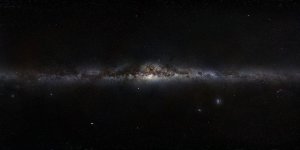| News / Space News |
NASA’s Chandra Detects Record-Breaking Outburst from Milky Way’s Black Hole
NASA | JANUARY 6, 2015
Astronomers have observed the largest X-ray flare ever detected from the supermassive black hole at the center of the Milky Way galaxy. This event, detected by NASA’s Chandra X-ray Observatory, raises questions about the behavior of this giant black hole and its surrounding environment.

The largest X-ray flare was 400 times brighter than the usual X-ray output from the black hole. ![]()
The supermassive black hole at the center of our galaxy, called Sagittarius A*, or Sgr A*, is estimated to contain about 4.5 million times the mass of our sun.
Astronomers made the unexpected discovery while using Chandra to observe how Sgr A* would react to a nearby cloud of gas known as G2.
The researchers have two main theories about what caused Sgr A* to erupt in this extreme way. The first is that an asteroid came too close to the supermassive black hole and was torn apart by gravity. The debris from such a tidal disruption became very hot and produced X-rays before disappearing forever across the black hole's point of no return, or event horizon.
A second theory is that the magnetic field lines within the gas flowing towards Sgr A* could be tightly packed and become tangled. These field lines may occasionally reconfigure themselves and produce a bright outburst of X-rays. These types of magnetic flares are seen on the sun, and the Sgr A* flares have similar patterns of intensity.
YOU MAY ALSO LIKE



